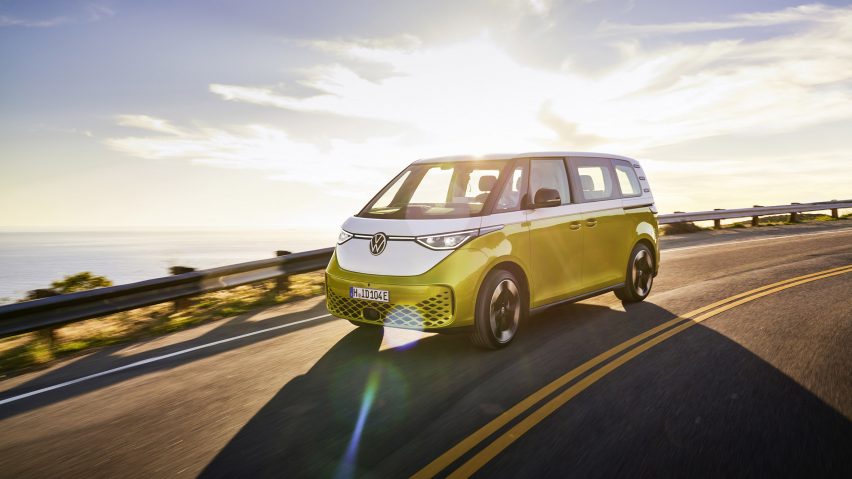
Volkswagen starts production on 1960s-informed all-electric ID Buzz van
German automotive company Volkswagen has launched its ID Buzz van – an update to its iconic hippie-era T1 Transporter that brings it into the electric vehicle age.
Production has begun on the all-electric ID Buzz, which boasts a look similar to the T1 that was first launched in the 1950s and became associated with the hippie movement in the 1960s and '70s.
It was sometimes also known as the kombi, campervan or "Bulli".
Like its historical counterpart, the ID Buzz, which is now available to order in Europe, has a flat front with almost no overhang and a V-shaped face adorned with an oversized VW logo. Optional two-tone paintwork further emphasises the likeness.
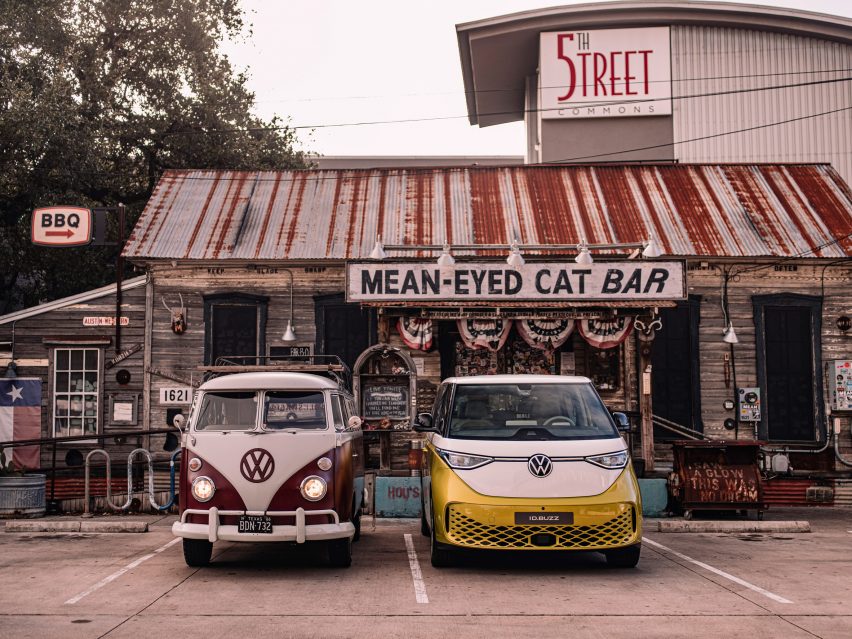
"The T1 was an icon of the 1950s," said Volkswagen head of design Jozef Kabaň. "With the ID Buzz, we're transferring its DNA into the age of electromobility. It's conveying the icon's genes and design elements into the digital age."
"And it is the proportions that make the ID Buzz so unique," he continued. "In the T1 you are practically sitting on top of the front axle – there's no front overhang. While providing everything of relevance to safety and technology, the ID Buzz has wonderfully short overhangs."
The ID Buzz is available in Europe with a 77kWh battery and a rear-mounted 150kW electric motor. When charged at a direct-current quick-charging station, its battery level rises from five to 80 per cent in about 30 minutes, according to Volkswagen.
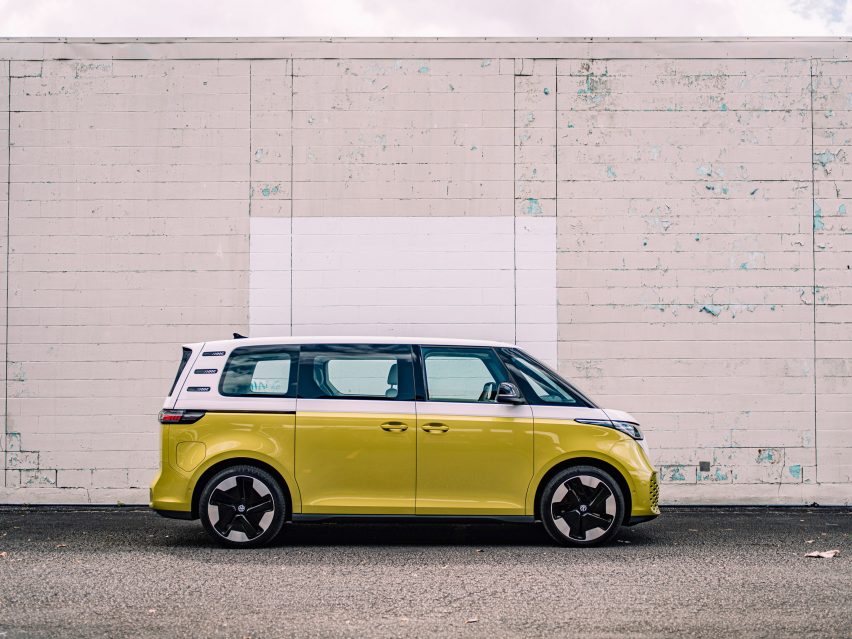
The interior is conceived as an open, lounge-like space that sits five people, making it a multipurpose vehicle or minivan rather than a microbus. Six- and seven-seater configurations are due to follow in the future.
Volkswagen encourages the space to be seen as a "digital living room" or "mobile home office", with features such as optional folding tables on the front seat backrests for laptops or tablets and up to eight USB ports.
No leather was used for the interior, which features only materials of non-animal origin, some made with recycled content.
"We have developed a vehicle layout with a logical and intuitive interior concept and variable use of space," said Kabaň.
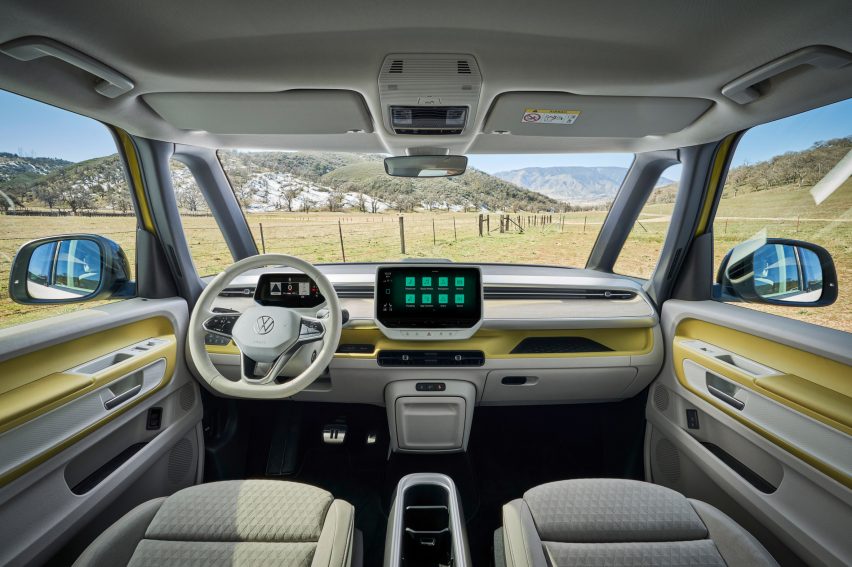
"It was our goal to bring our customers' home into the vehicle interior," said Volkswagen head of interior design Tomasz Bachorski. "And this in every aspect, from the materials to the digital equipment that you’re used to at home."
ID Buzz will also come in a Cargo model, which is not yet on sale. It has two or three front seats and, separated by a partition, 3.9 cubic metres of rear cargo space – enough for two European standard-sized pallets.
The vehicle is built on the Volkswagen Group's Modular Electric Drive Kit (MEB) platform, its scalable large-production-run platform for all-electric cars, which is now the basis for 30 per cent of its vehicles.
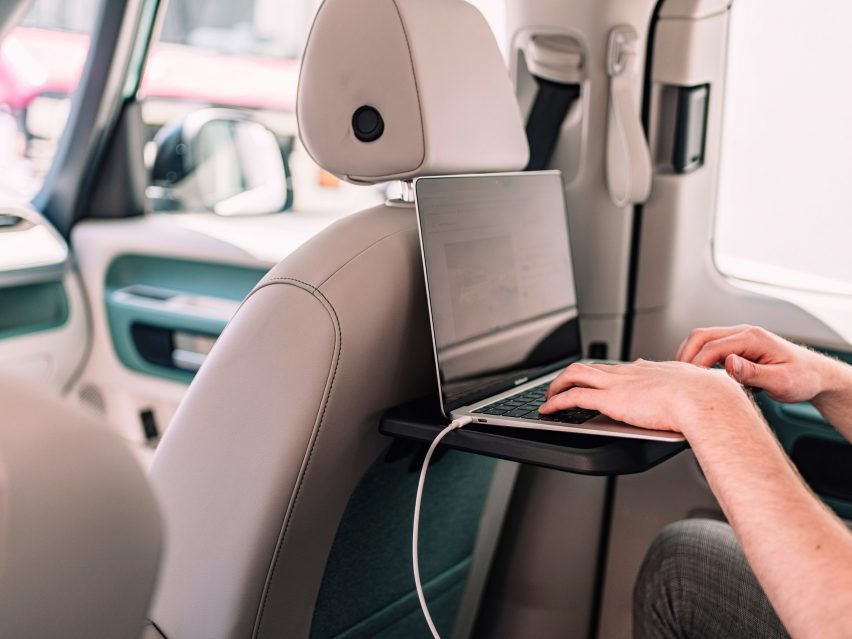
The controls include a multifunction steering wheel, touch display and natural voice control, and there is the option to include 30-colour adaptive interior ambient lighting.
The VW Buzz also features 'Travel Assist with swarm data', a function that facilitates partially automated driving as well as assisted lane-changing on the motorway.
Volkswagen first unveiled the ID Buzz in 2017 at the North American International Auto Show (NAIAS) in Detroit.
The T1 minibus was first released in 1950 and was only the German automaker's second car model, following the Beetle. The company recently rebranded to a flat logo to mark its move into the digital era.